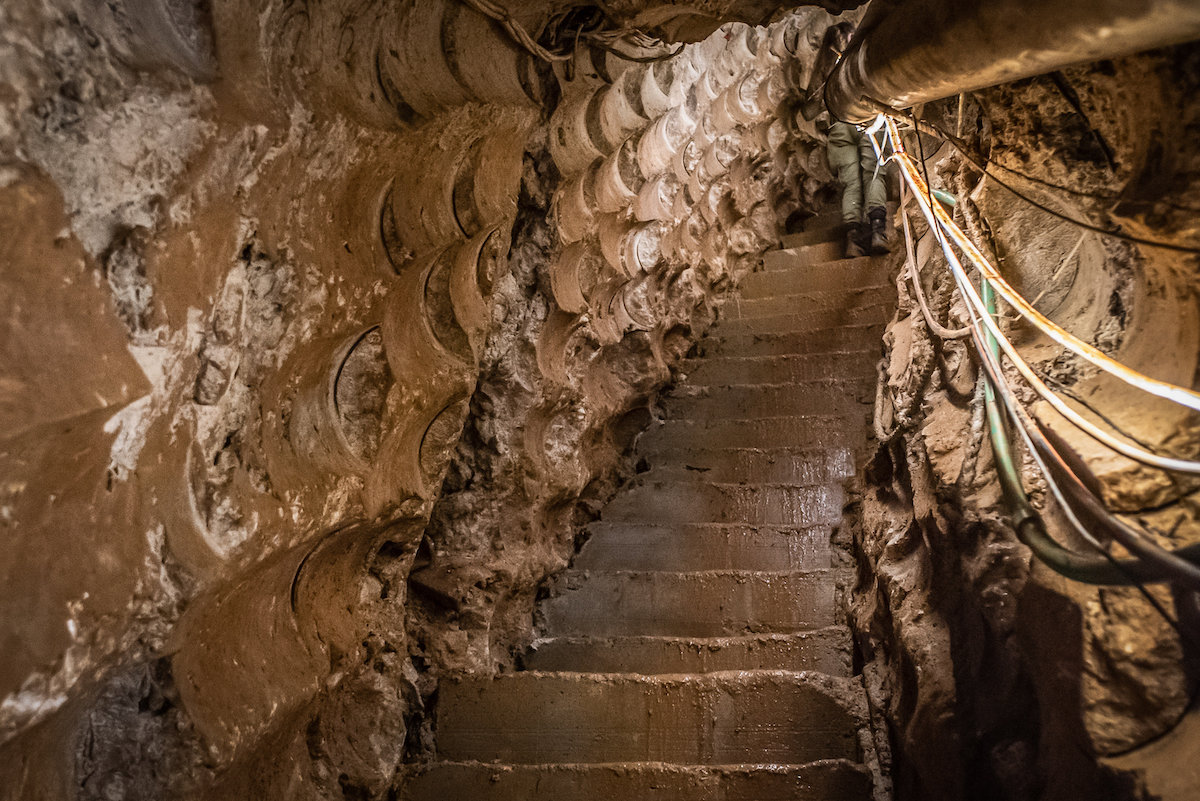Israeli security expert warns Hezbollah’s tunnel infrastructure more advanced than Hamas underground Gaza network
Tensions are particularly high along the border between Lebanon and Israel after senior Hamas terror chief Saleh al-Arouri was assassinated on Tuesday

While Israel Defense Forces continues focusing on dismantling the terrorist organization Hamas in Gaza and its vast subterranean tunnel network, Israel faces an even greater security threat in the north from Hezbollah terror forces in Lebanon, according to security expert Tal Beeri.
Beeri, the head of the Alma Research and Education Center, has warned Israel that the Iranian-backed terror group Hezbollah has even more advanced tunnel infrastructure than Hamas, and poses a considerably larger threat against northern Israeli communities.
Alma is an NGO dedicated to security-related research on Israel’s northern borders.
In 2021, Beeri documented the vast and sophisticated Hezbollah tunnel network in what he calls the “Land of the Tunnels” in southern Lebanon, close to the Israeli border. Iran and North Korea have played a crucial role in assisting Hezbollah with the tunnel infrastructure development project since the Second Lebanon War in 2006.
According to Beeri's 2021 report, Hezbollah’s vast tunnel network consists of 36 interconnected regions in Lebanon, shaped as polygons.
“In our assessment, these polygons mark Hezbollah’s staging centers as part of the ‘defense’ plan against an Israeli invasion of Lebanon. Each local staging center (‘defense’) possesses a network of local underground tunnels. Between all these centers, an infrastructure of regional tunnels was built, interconnected [with] them,” Beeri explained.
The Israeli security expert is particularly concerned about Hezbollah’s 45-kilometer (28-mile) attack tunnel network that directly threatens northern Israeli communities. Beeri's research was initially met with some skepticism, which he addressed by stating: "We compiled and collected information from a series of sources and videos about the work on the tunnels, including a 2007 video in which Imad Mughniyeh, the Hezbollah number two who was assassinated in February 2008, was seen inside the attack tunnel. We attached an original map that we found online, on which somebody had marked the route, and we did ‘reverse engineering.’ That’s how we put together what seemed to be the route of the 45-km tunnel,” he wrote.
Hezbollah attack tunnels in Lebanon could potentially play a central role in the terror group's ambitions to invade northern Israel. In December, an Alma Center report warned that Hezbollah is fully prepared to invade northern Israel with its elite Radwan unit.
“The Radwan unit is fully trained and capable of launching an incursion into the Galilee at any given moment,” stated the Alma report.
"Even if the majority of Hezbollah’s elite forces have distanced themselves from the border, there is no change to Hezbollah’s overall readiness,” the report added.

Tensions are particularly high along the border between Lebanon and Israel after senior Hamas terror chief Saleh al-Arouri was assassinated on Tuesday in a drone attack in Beirut. The attack was attributed to the IDF.
Arouri was considered one of the main architects of the Oct. 7 massacre of more than 1,200 Israelis by Hamas and its operatives.
Hamas has already threatened to retaliate and its ally Hezbollah has also threatened to respond to the alleged Israeli airstrike that took place in a Hezbollah stronghold in southern Beirut.
Hezbollah stressed in its official statement that the elimination of the Hamas commander in Lebanon would not go unpunished.
"We consider the assassination of Arouri and his companions in Beirut a serious act of aggression against Lebanon and the Lebanese people, including the security of Lebanon, its sovereignty and the resistance movement. We declare that this crime will not go unpunished and that the hands of the resistance are on the trigger and its forces are on high alert," Hezbollah stated.

The All Israel News Staff is a team of journalists in Israel.














